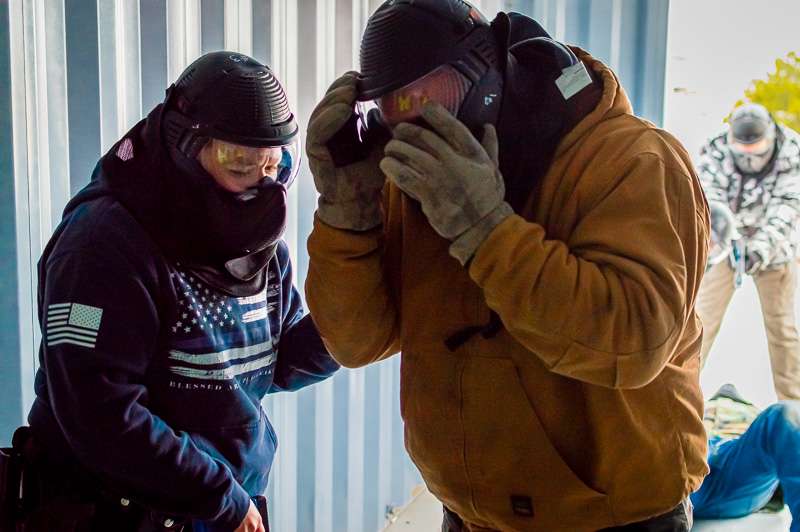
By JAMES BELL
Hays Post
On-the-job police officers, even in the safest of cities, must sometimes put themselves in harm’s way to protect other officers and the public.
To help prepare for those situations, officers with the Hays Police Department are subjected to ongoing training, including monthly sessions meant to provide officers with more tools at their disposal to be ready for any situation.
But twice a year, that training gets real.
On Wednesday, HPD officers gathered at the Hays Fire Department training tower to engage in “reality-based training” giving officers a taste of what to expect in a variety of situations.

The training features the use of realistic weapons, allowing trainees to safely experience dangerous scenarios.
They shoot with bright blue pistols that are the same make and model as their service weapons but, instead of bullets, fire plastic projectiles that leave a brightly colored mark upon impact.
The marks allow the officers to see how they are hitting their targets and reacting to the situations.
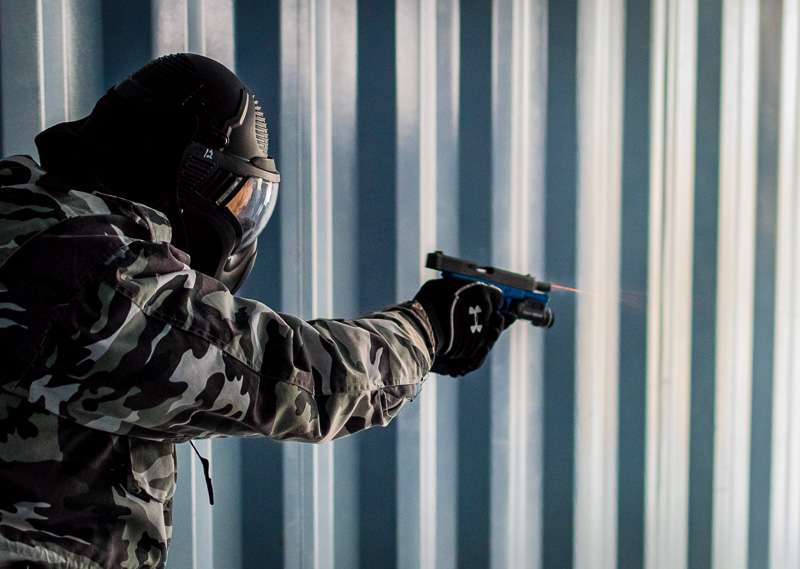
“They also have a sting to them,” said HPD Lt. Tim Greenwood. “They hurt. And so just that infliction of pain creates anxiety, it’s a natural response in humans.”
Donning protective gear, they run through a variety of scenarios using those special weapons with officers taking on the roles of victims, suspects and other individuals to emulate what an officer might encounter while on the job.
“We just subject them to different things that we want them to learn about, and sometimes like today we will through them into a scenario and then afterward we bring them in, we do a little bit of critique,” Greenwood said.
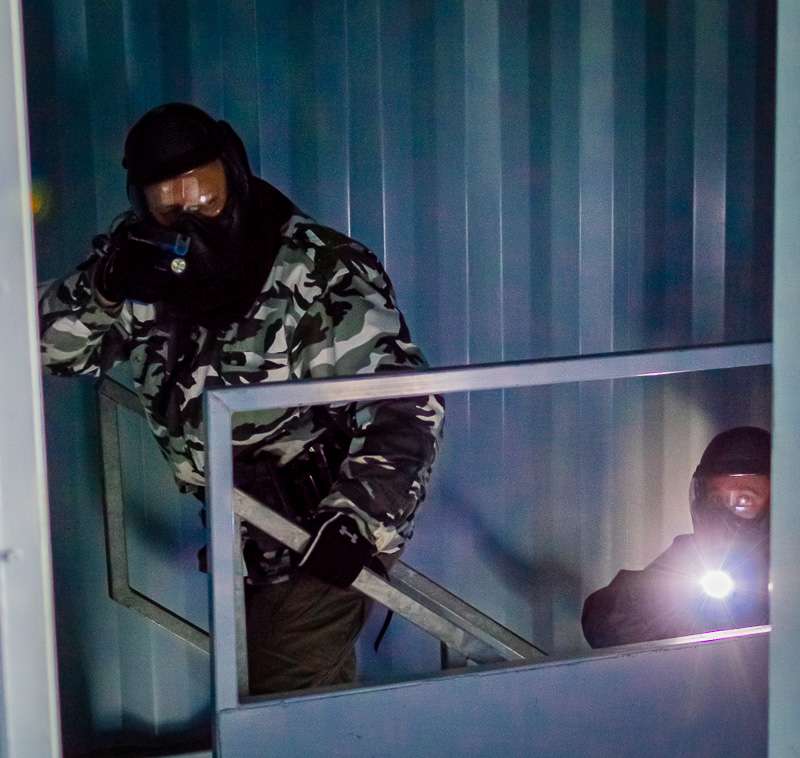
Those situations range from saving hostages to a simple noise complaint to that involves an armed individual that has an active warrant issued for their arrest, where Greenwood said, “If they do things right, we are going to find the gun and we are going to take that person into custody safely. And if they make mistakes, it can be dangerous, not only for them but for the suspect.”
Training such as this can also help keep officers ready in case of new growing concerns.
“It’s an unfortunate fact that ambushes are killing a lot of officers in modern society,” Greenwood said. “It used to be arrests were very dangerous and now we are losing more officers to just getting ambushed.”
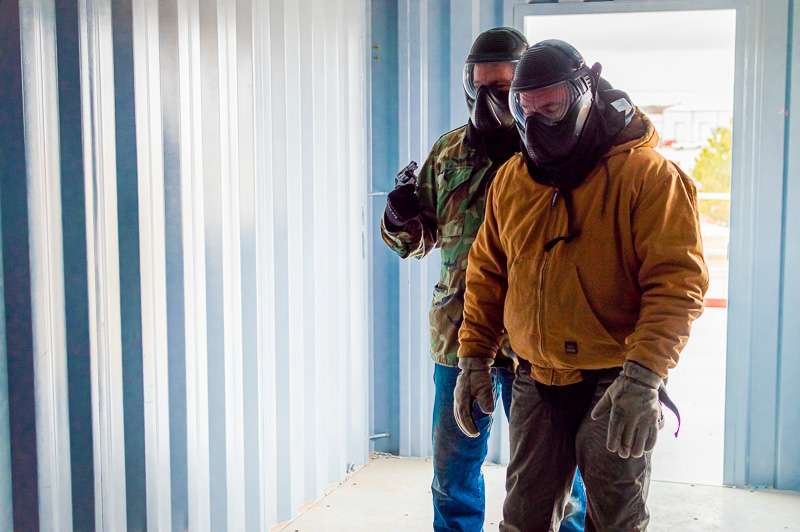
The incident in Dallas in which officers were killed by a sniper in an elevated position is an example of threats that officers must now train for, he said.
“This training site gives us that opportunity,” Greenwood said. “One of the scenarios we went through was officers arriving on scene for a domestic violence situation and as soon as they get out of the car and start approaching this gentleman opens fire on them with a rifle from an elevated position. So, they have to return fire, they have got to help each other, they have got to communicate with dispatch.”
But not all of the scenarios involve a violent end, some are simply situations where the officer must try to find the best outcome.

“Sometimes citizens call the police when it is not a criminal matter and we have to say, 'Hey, unfortunately that is not a criminal matter, I can't give you legal advice, but you might want to talk to an attorney about that,' ” Greenwood said.
“The scenarios run the full gamut,” he said.
HPD officers who conduct the ongoing training, Greenwood said, are chosen by their skills and experience.
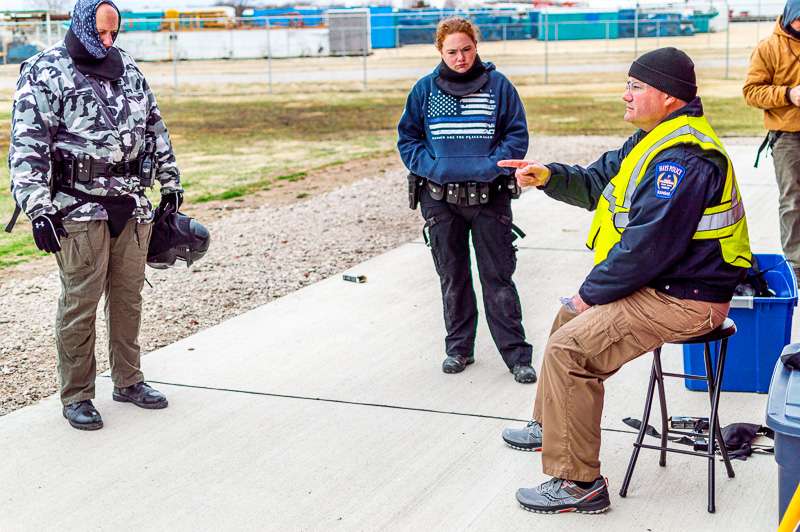
Sharing those skills and lessons from the field with other officers helps keep the HPD ready for the variety of situations they face.
“They can look at a situation and say ‘This is how we want to do it to continue to be a professional organization,’ ” Greenwood said. “So, we keep that trend going.”
While classroom discussions can give officers the information they need, he said the reality-based training adds the physical element that can create the best outcomes for the officers when presented with difficult situations while on the job.
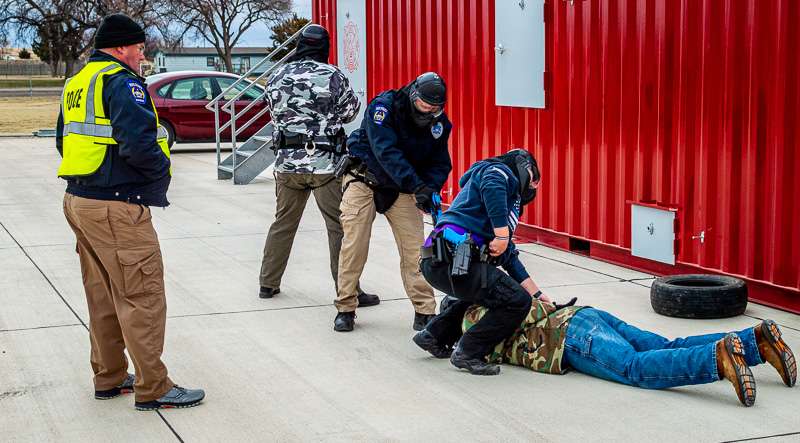
“It creates anxiety. It creates pressure,” Greenwood said.
And dealing with anxiety helps officers in real situations.
“When you have an adrenaline dump and lives are on the line, you don’t rise to the occasion,” he said. “You sink to your level of training and if you don’t have it preprogrammed on what the best thing to do when there are lives on the line, things will go poorly.”
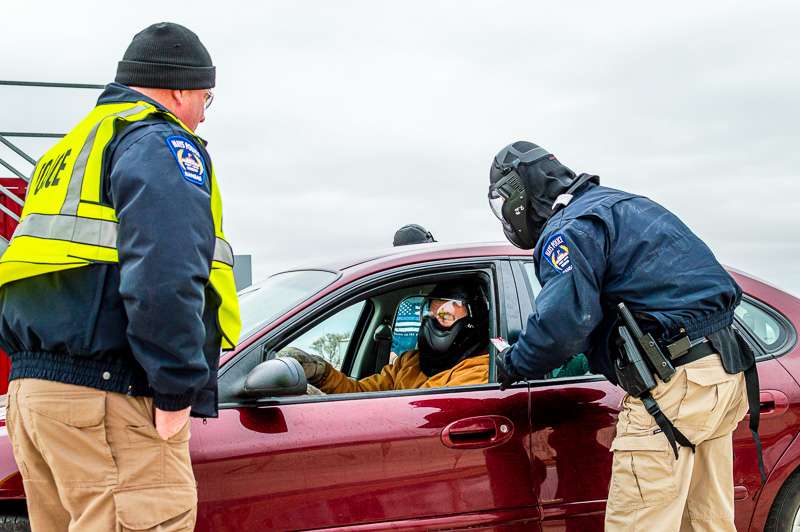
So they continue to train.
“It’s a constant endeavor,” he said. “Things are always changing and improving.”






